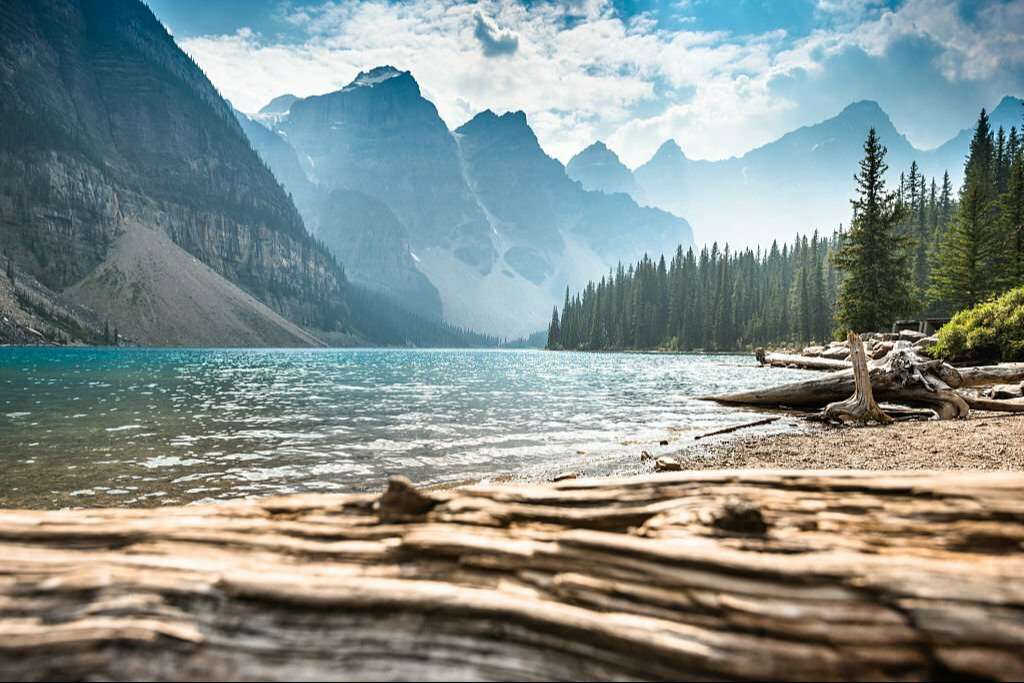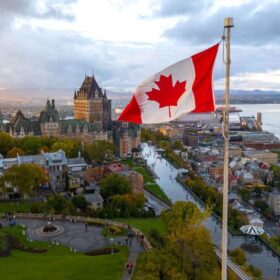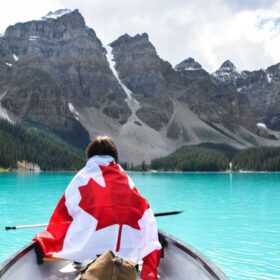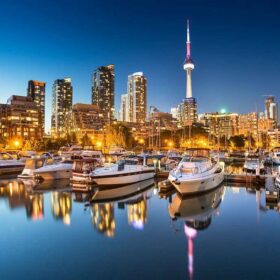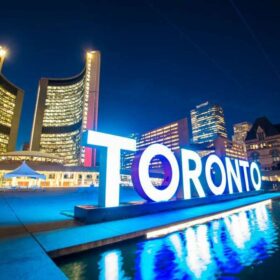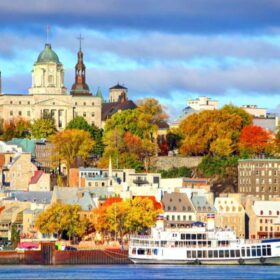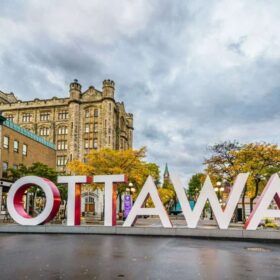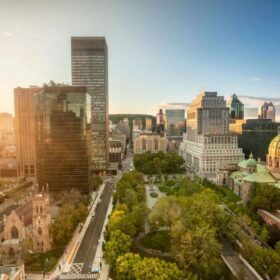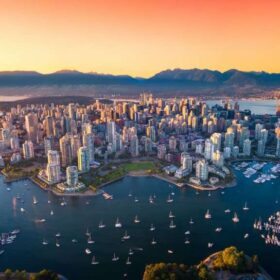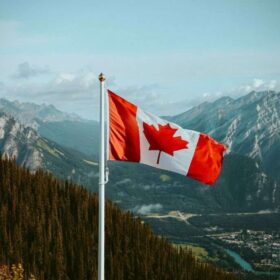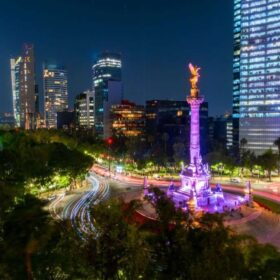Canada boasts an estimated two million lakes, but our list of the best lakes in the country features only 12 of them.
From brilliantly blue glacier-fed lakes to lakes that invite summer canoeing and winter skating, we have curated a selection of the most popular, picturesque, and spectacular lakes nationwide.
While some lakes on this list are perfect for a refreshing swim, others maintain an ice-cold temperature even on the hottest summer day – and one strictly prohibits swimming. Nevertheless, each lake is worth a visit.
Plan your sightseeing with our compilation of the best lakes in Canada.
Lake Louise
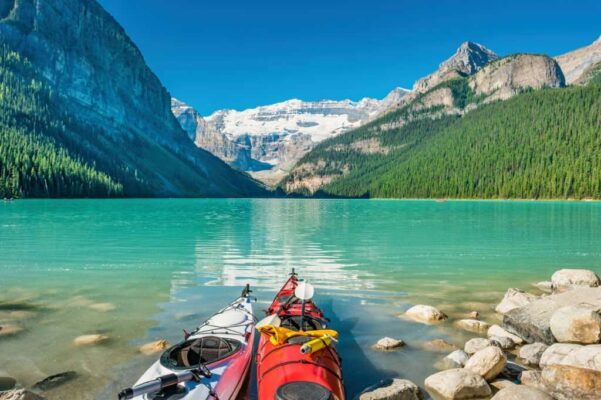
Nestled in Banff National Park, Lake Louise stands out as one of Canada’s most extraordinary lakes. The alluring aqua-blue water, fed by glaciers, gives it a tropical appearance, but its freezing cold temperature throughout the year makes it less suitable for swimming.
Despite its chilly waters, Lake Louise is a highly sought-after tourist destination, easily accessible and surrounded by the majestic Rocky Mountains, providing a perfect backdrop for photos. Whether paddling in the summer or ice-skating in the winter, the lake offers picturesque activities.
Numerous day hikes are available in the vicinity, catering to varying levels of difficulty. Beginners can explore the flat, hour-long Lakeshore trail, encircling the lake, or venture to the Fairview Lookout for a relatively easy ascent, rewarding hikers with a panoramic view above Lake Louise. Moderate trails, like the Lake Agnes Teahouse hike, lead to other nearby lakes, while more challenging paths elevate adventurers further into the mountains.
Read More: Top Tourist Attractions in Banff National Park
Accommodation: Where to Stay in Banff National Park: Best Areas & Hotels
Moraine Lake
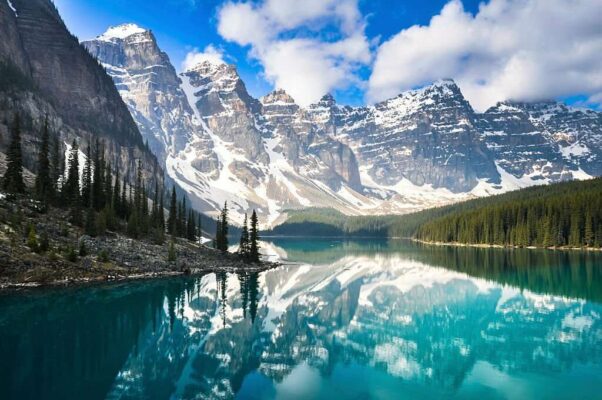
Close to Lake Louise lies another breathtaking body of water: Moraine Lake. Although Moraine is approximately half the size of Lake Louise, it boasts the same sparkling green hue and is surrounded by equally impressive mountain peaks.
Accessing Moraine Lake can be a bit more challenging. The road leading to the lake closes during winter, and the lake itself remains frozen until as late as June. The parking lot at the lake is relatively small and tends to fill up rapidly. Parks Canada staff manages the lot, and if you arrive late, you might be turned away. Alternatively, you can choose to take a shuttle to the lake, avoiding parking issues altogether.
Moraine Lake is perfect for a day trip. You can rent a canoe at the lake, hike along its shores, or explore more challenging trails in the area. Alternatively, you can simply sit by the lake and soak in its beauty. For those who can’t get enough, there’s a lodge with seasonal availability, offering overnight accommodations.
Spotted Lake
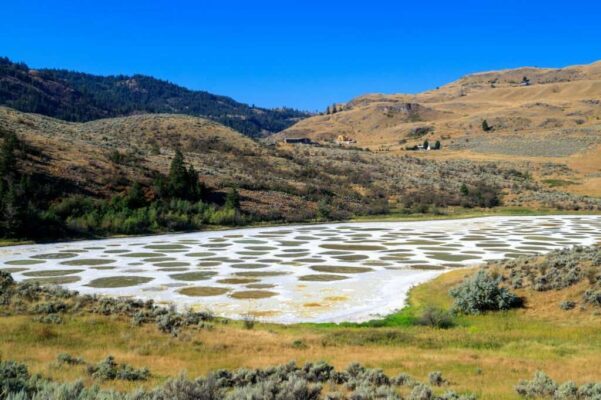
Arguably the most fascinating lake, in a figurative sense, across all of Canada is Spotted Lake near Osoyoos, British Columbia.
This lake boasts a delightfully whimsical appearance, adorned with large polka dots that speckle the water; some are blue, while others take on a greenish hue.
Despite the lake’s magical appearance, there’s a scientific explanation for the spots: it all comes down to minerals. Dense deposits of minerals, including magnesium sulfate, calcium, and sodium sulfates, among others, are scattered throughout the lake. When some of the water evaporates in the summer, the spots become visible. The colors of the spots vary, depending on the mineral composition.
While the lake is a sight to behold, that’s essentially all you can do here. Spotted Lake is an ecologically sensitive area and holds cultural significance as a sacred site of the Okanagan Nation, leading to restricted public access. Visit during the summer months to witness the spots more prominently.
Emerald Lake
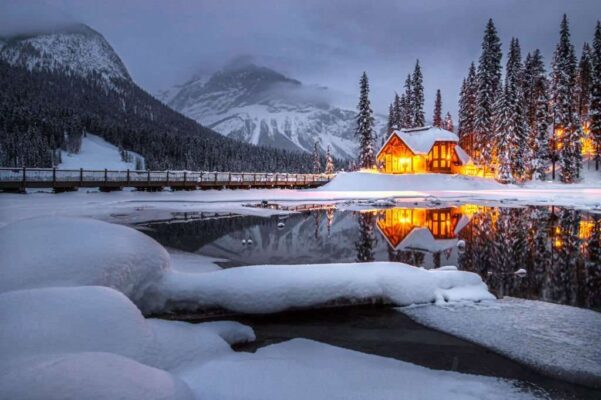
Yoho National Park in British Columbia boasts a total of 61 lakes and ponds, with Emerald Lake claiming the distinction of being the largest within the park’s confines.
The origin of this lake’s name is easily discernible: owing to rock flour, consisting of superfine particles of glacial sediment, the water exhibits a sparkling green hue, resembling the gem it is named after.
Emerald Lake offers enjoyment throughout the year. During the summer, you can rent a canoe and embark on a paddle across the water. In winter, the lake freezes over, becoming a popular destination for cross-country skiing. Early fall is considered one of the optimal times to visit, avoiding the summer crowds and preceding the arrival of snow.
A 5.2-kilometer trail encircles the lake, with approximately half of it being wheelchair- and stroller-friendly – provided there is no snow on the ground. Due to the high elevation, snow can persist on the trails until as late as June.
Situated on the water’s edge, the Emerald Lake Lodge is a delightful resort where you can either spend the night or drop in for a meal.
Peyto Lake

We know, yet another glacier-fed azure lake in Banff National Park.
You might be forgiven for assuming that witnessing one stunning glacial lake implies having seen them all, but that assumption would be considerably inaccurate. Even if you’ve experienced Lake Louise and Moraine Lake firsthand, it is still highly recommended to venture along the Columbia Icefields Parkway to witness the exceptionally blue Peyto Lake.
Similar to the other easily accessible lakes near Banff, Peyto Lake tends to draw crowds during the tourist season. Many visitors aim to beat the rush by arriving early in the morning, but here’s a little secret: late afternoon and early evening are also typically quieter times for a visit.
Lake of Bays
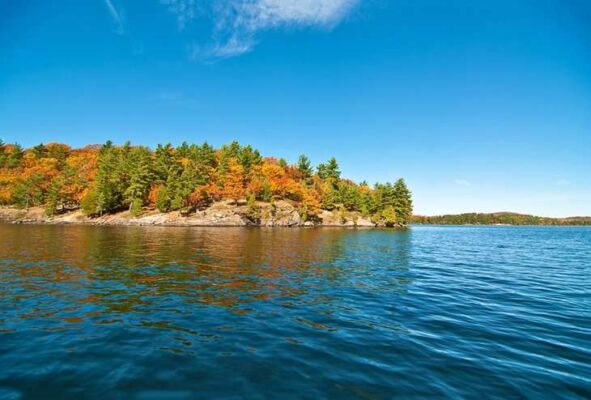
Muskoka serves as Ontario’s cottage country, providing a retreat from the urban chaos for those seeking relaxation by the water. While the region boasts numerous fantastic lakes, one of the finest is Lake of Bays.
The lake’s character varies depending on the location. Some areas are developed, featuring golf clubs, public beaches, and waterfront lodges. There are secluded spots with private cottages and stretches of the shoreline remain untouched. Numerous islands dot the lake’s expanse.
True to its name, the expansive lake, covering 671.5 square kilometers, contains numerous bays, creating serene pockets of water ideal for cottage activities such as boating, swimming, paddleboarding, and water skiing.
During the winter freeze, the lake transforms into a hub for ice fishing, snowmobiling, and spontaneous pond hockey games.
Lake Superior
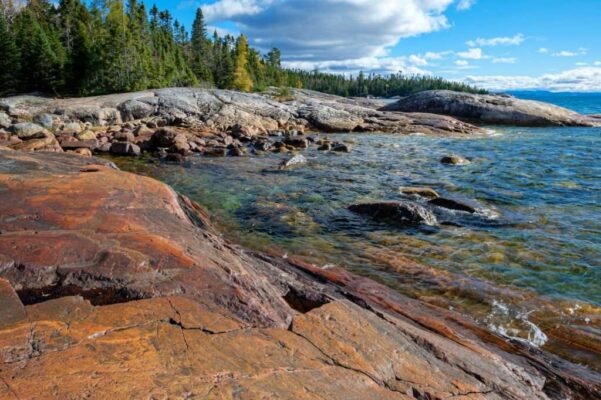
There are five Great Lakes, each boasting unique features and attractions, but only one has earned a spot on our list: Lake Superior.
What sets this lake apart? Its size is undoubtedly remarkable: spanning 128,000 square kilometers, it is the largest of the Great Lakes and holds the title of the world’s largest freshwater lake by surface area.
However, Lake Superior’s superiority extends beyond its sheer size. The lake’s beauty is rugged and awe-inspiring. During clear weather, its bays glisten in shades of blue, and the sandy beaches could almost be mistaken for tropical shores. Yet, in an instant, creeping fog can envelop the surroundings, leaving wanderers completely disoriented. In stormy weather, the lake unleashes choppy waves.
Various ways exist to intimately experience Lake Superior: take a swim at one of its beaches, embark on a fishing expedition, explore the shoreline by kayak, or embark on a wilderness hike in parks along the way, including Lake Superior Provincial Park, Ruby Lake Provincial Park, Sleeping Giant Provincial Park, and Pukaskwa National Park.
Lake Ontario
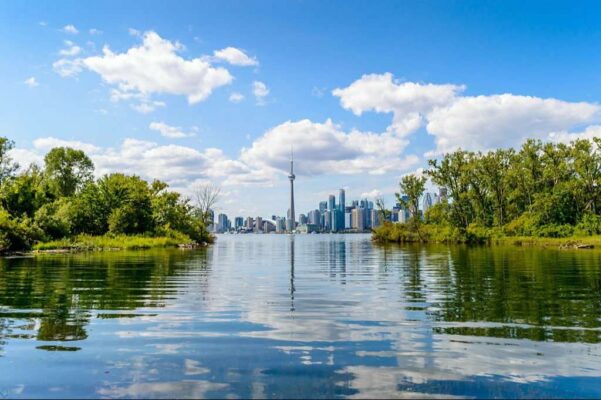
Though Lake Ontario is the smallest among the Great Lakes, it holds the distinction of being the world’s 14th largest lake, and its name is shared with the Canadian province it borders. Situated beneath Niagara Falls, the lake serves as the Great Lakes’ connection to the Atlantic Ocean, ultimately flowing into the St. Lawrence River. Adorning its shores are proud lighthouses, and the lake is punctuated by numerous islands. Toronto, the largest city on the Canadian side, graces its waterfront. A challenging feat attempted by many swimmers involves crossing the 51 km (32 miles) span of the lake, a task accomplished by approximately 50 individuals.
Garibaldi Lake
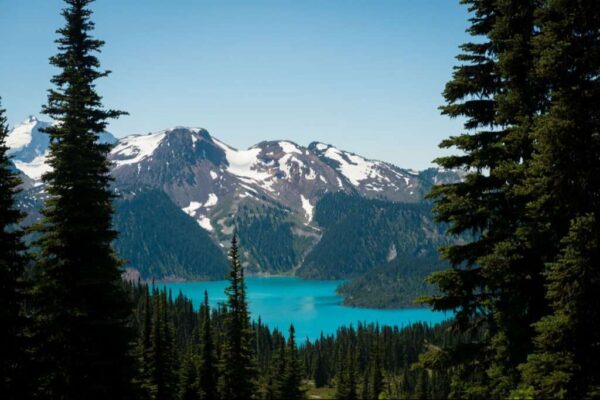
While many lakes on this list are easily accessible, Garibaldi Lake, located in British Columbia’s Garibaldi Provincial Park near Whistler, presents a different challenge. This stunning alpine lake requires some effort to reach. The journey involves a nine-kilometer hiking trail, gaining an impressive 820 meters in elevation each way.
The trail commences with a gradual ascent through forested switchbacks, leading to alpine meadows adorned with vibrant wildflowers during the summer months. Whether you opt for a day trip or reserve a lakeside campsite, the trek, especially with camping gear, promises a rewarding experience. Beyond the lake, additional trails beckon, such as the ascent to Black Tusk or the Panorama Ridge trail, offering breathtaking views of Garibaldi Lake from elevated vantage points.
For those without hiking boots, an alternative to savor the beauty of Garibaldi Lake is a scenic flight tour on a small plane. While not free, this option eliminates the need for physical exertion, providing a swift and sweat-free route to enjoy the scenery.
Rainy Lake
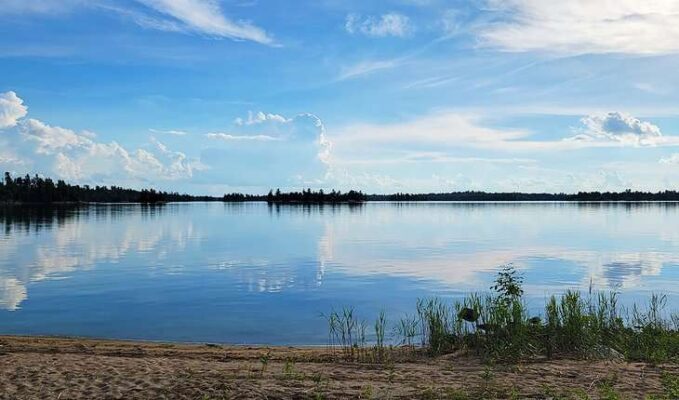
Vast and undiscovered by most, Rainy Lake boasts unique features that set it apart. Extending north, south, and east of Fort Frances, Ontario, this lake is a hidden gem in Canada. With numerous bays, over 2,000 islands, and expansive water stretches, it’s a paradise for pleasure boating. Cottages adorn the lakeshore, creating an inviting atmosphere for swimming and water sports.
The north arm of Rainy Lake is characterized by islands, large white pine trees, and exposed granite shorelines, while the south arm features broader expanses of water. On the lake’s southern shore lies Voyagers National Park, a notable national park in the United States.
Renowned as a fishing hotspot, Rainy Lake attracts anglers in pursuit of various species. Bass, particularly, is a popular target, with the annual Fort Frances Canadian Bass Championship in July drawing teams from both Canada and the United States. Abundant walleye (pickerel) and trophy-sized northern pike further contribute to the lake’s allure.
Great Slave Lake
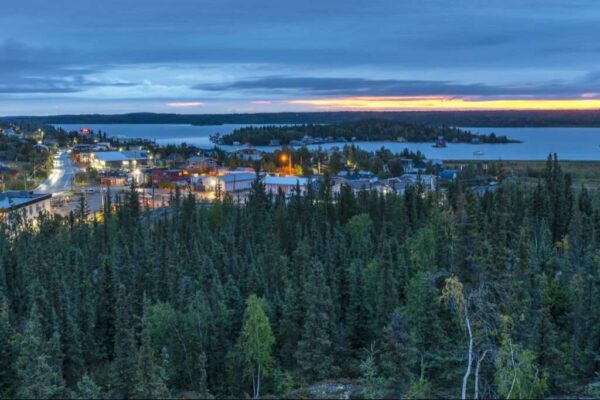
In Northern Canada, you will find some of the most impressive and remote lakes, offering a special treat if you can reach them during the short summer season.
Great Slave Lake stands out as a colossal body of water, ranking as the tenth largest globally. With astounding depths of 615 meters in sections and spanning 480 kilometers from end to end, it’s a natural wonder.
The lake is particularly renowned for fishing, boasting Arctic grayling, trout, and northern pike. Birdwatchers worldwide flock to witness the over 200 recorded bird species on and around the lake’s shores.
While sailing may not be the first activity that comes to mind, the vast expanses and deep waters of Great Slave Lake make it an ideal destination for hoisting the sails and embarking on a journey into the sunset, which this far north could extend well past 11 pm.
FAQs
Q: Are these lakes easily accessible for tourists?
A: Most of the lakes mentioned are accessible, with varying levels of infrastructure for tourists. Check specific locations for details.
Q: Which lake is best for wildlife enthusiasts?
A: Kluane Lake and Great Bear Lake offer excellent opportunities for wildlife enthusiasts, with their pristine wilderness and diverse fauna.
Q: Are there camping facilities near these lakes?
A: Yes, many of these lakes have camping facilities, providing a chance to immerse yourself in nature.
Q: Can I visit these lakes year-round?
A: While some lakes are accessible year-round, it’s advisable to check seasonal variations and weather conditions.
Q: Are there guided tours available for these lakes?
A: Yes, guided tours are available for many of these lakes, providing insights into their ecological significance and cultural importance.

